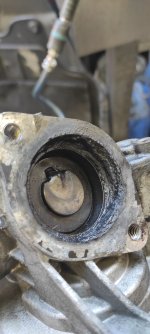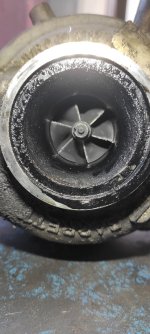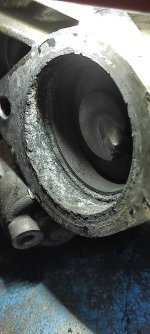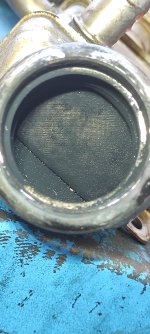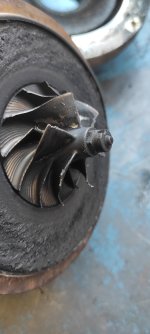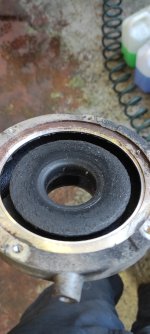@jansla and all interested parties, my immediate conclusion is the new LPEGR cooler has fixed the issue, and probably nothing to do with the turbo. Also, regardless of what the mechanics have said about the DPF, it is broken as it has allowed soot to pass. It is almost unbelievable that they have reported they could not see any issue with the DPF, yet the evidence was clearly right before their eyes.
It is interesting that there is still a difference in the turbo boost - but now it is around 5% and not 11% so a marked improvement. What I see in your graphs is what I have seen recently from operational 130HP engine graphs so far as the boost difference goes - so perhaps that is normal for a good 130HP variant. I also note that the Turbo actuator command dips on the odd occasion as it did before, and when it does the turbo boost matches desired - again, perhaps this is normal for the 130HP engine. What I see now is the LPEGR valve modulating correctly and along with that the MAP temperature is higher, and this is coincident with a lower LPEGR temperature which all indicates that the new cooler is allowing the correct amount of gas flow (higher than before) required.
Below are two graphs. The first is before, and the second is after the fitting of the new LPEGR cooler and turbo. It proved difficult from the available data to find the same operating conditions; however, the best I could find is in these two graphs. In both, the engine is at operating temperature and the important point is the HPEGR is shut. This is important as the HPEGR when open will influence and override the important relative parameter measurements which point to the LPEGR cooler as the root cause of the issue with your engine.
In the first graph (before) the LPEGR valve is near full open all the time, the LPEGR temperature is high (average of 100C) yet the MAP temperature is around 28C.
In the second graph (after) the LPEGR valve is modulating around ½ open, the LPEGR temp slightly lower (average of 92C) yet the MAP temperature is around 35C.
So, in the second graph the LPEGR valve can modulate correctly as there is the correct amount of EGR gas flowing to raise the MAP temperature higher, with lower LPEGR gas temperature. This can only be possible if the LPEGR gas volume is higher. In the first graph, the LPEGR valve is near fully open with even higher supply gas temperature but cannot raise the MAP temperature – pointing to restricted flow and hence lower than designed and expected LPEGR gas flow. Because the desired MAF air flow rate is calculated from the design calculated LPEGR gas volume, the MAF reports the correct expected air flow. The trouble is, the LPEGR gas flow is restricted and results in a combined actual gas flow being low.
You can overlay all the other relevant data (as I have done) to look for any other possible influences, but I could not see any that stood out. I have excluded all other parameters from displaying on these graphs for the sake of clarity.
My conclusion is that the DPF is obviously broken (that is undeniable as there is soot downstream), and this has caused the LPEGR cooler to be gradually filling with soot and restricting the LPEGR gas flow. This results in under-boost due to incomplete total gas volume at the inlet of the turbo, and under high demand conditions will create a large enough boost difference to generate fault codes, resulting in protective limp mode.
The important consideration is that the new LPEGR cooler will eventually have the same issue down the track as the DPF has not been replaced. Not only that, but as you have seen the soot gets into the turbo, and that will flow through the intercooler and interconnecting hoses. According to FIAT’s own Service News 10.023.19 the DPF must be replaced at the same time.
Hope that you now have trouble free motoring, but I would be considering what to do about the DPF and perhaps checking the intercooler for any soot. I wonder how FIAT would react if you presented the facts to them along with a copy of the 10.023.19 Service news? The mechanics have fixed a symptom of the fault, but not the cause. You may have leverage to obtain some form of compensation for the future labour charges to replace the DPF.
One further point that I think is worth mentioning here is that the analysis and fault diagnostic power of
MES is very powerful. Also, because of the complexity and interrelated feedback loops involved, it is vital to not focus in on just one parameter in isolation, but to maintain a very wide-angle view across all parameters to help determine a particular fault.
BEFORE: Speed: 80kph, RPM: 2300
AFTER: Speed: 75 - 95kph, RPM: 1600 – 2400

